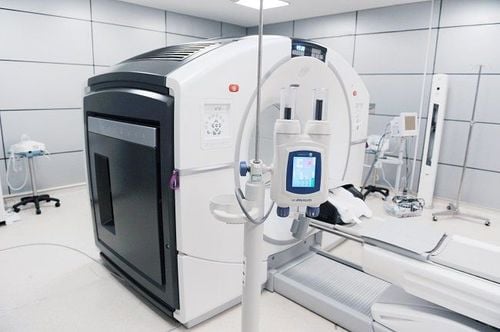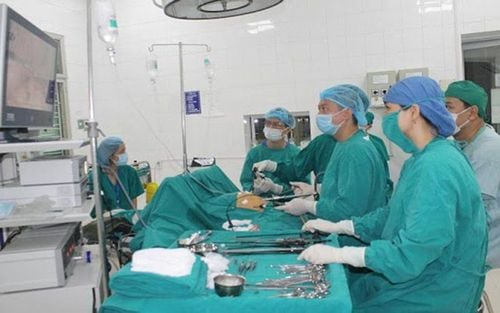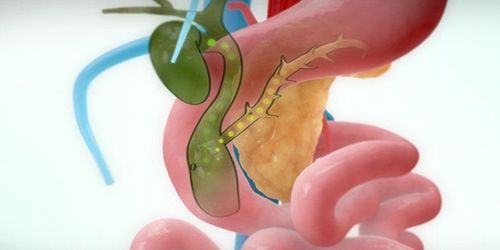This is an automatically translated article.
The article was written by Professor, Doctor, Doctor Nguyen Thanh Liem - In charge of High-Tech Unit for Autism and Cerebral Palsy treatment and Director of Vinmec Institute of Stem Cell and Gene TechnologyCommon bile duct cysts are quite common in Asia, especially Vietnam, Japan and China. The disease has many dangerous complications if left untreated.
1. What is a common bile duct cyst? A common bile duct cyst is a congenital, ≥ 1 cm dilatation of the common bile duct (Figure 1).
2. What are the manifestations of common bile duct cysts? Manifestations of common bile duct cysts vary according to age In infants and young children the disease is often manifested by jaundice or abdominal mass. Abdominal pain less common In older children, the common presentation is repeated abdominal pain, sometimes accompanied by fever, yellow eyes, and jaundice (cholangitis) Nowadays with the development of prenatal ultrasound, Most cases of common bile duct cysts are detected before birth.


Chụp cộng hưởng từ là kĩ thuật hiện đại cho phép đánh giá chính xác hình ảnh của hệ thống đường mật đặc biệt là kênh chung của đoạn cuối ống mật và ống tụy
4. What complications will happen if the common bile duct cyst is not treated? Cholangitis due to infected bile juice Cirrhosis from recurrent cholangitis and cholestasis Acute pancreatitis Bleeding from an ulcerated biliary wall. Bile duct cancer. 5. When is surgery necessary? For cases diagnosed before birth without jaundice, yellow eyes can be operated at about 3 months of age. If accompanied by jaundice, surgery earlier at 1-2 months of age For other cases, surgery soon after being detected 6. What is the principle of surgery? The principle of surgery is to remove the entire common bile duct and then re-establish the circulation of bile from the liver to the gastrointestinal tract by means of the remaining hepatic duct with the small intestine or duodenum. Previously, surgery was performed by open surgery (branch surgery) but due to many limitations such as: cutting many muscles, pain, slow recovery, bad scars, today laparoscopic method is applied to all cases. fit.
The principle of surgery is to remove the entire common bile duct and then reestablish the circulation of bile from the liver to the digestive tract by means of the remaining hepatic duct with the small intestine or duodenum. 7. What complications can occur during surgery? This is a difficult, complicated surgery. Possible complications are:
Intraoperative bleeding due to tearing of blood vessels entering the liver Right cut of the pancreatic duct Postoperative bleeding Postoperative anastomosis fistula Narrowing of the anastomosis Inflammation or leakage of pancreatic juice. 8. What's the progress after surgery? Doctors usually put a catheter into the abdomen to allow the fluid in the abdomen to drain out. If the amount of fluid becomes less, the tube can be withdrawn on day 5. Another tube is placed through the nose into the stomach to allow the gastric juice and gas to escape. This tube is removed when the child has a bowel movement. Children can be given fluids for 3-4 days after surgery and then switch to oral food. The hospital stay after surgery is 5-7 days. See more:
Prof. Nguyen Thanh Liem performs laparoscopic surgery for common bile duct cysts in Europe Saves premature babies with heart failure, severe respiratory failure due to RSV virus New advances in diagnosis and treatment of trauma in children














